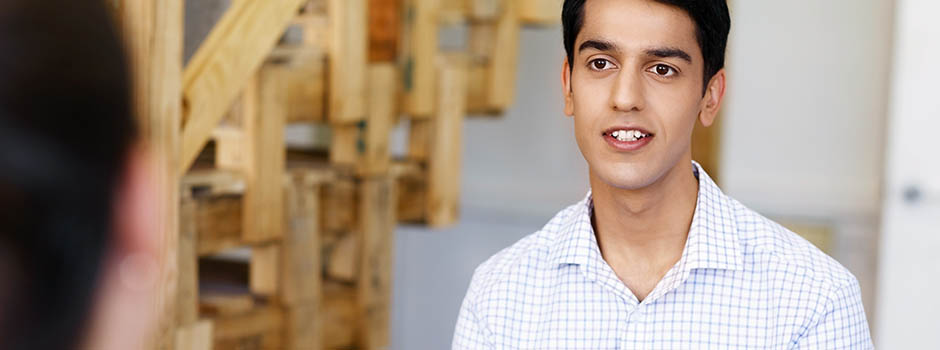BEFOREHAND
Any interview requires, for the journalist as much as for the person interviewed, a discussion, a chat or simply an initial exchange before recording or going live on air. This first step allows the journalist to get to know the subject or the person, gather or cross-check information, present the objectives of the interview and the rules of the proposed exercise, in order to decide on the best questions to ask.
It is also useful to become acquainted with the interviewee. However, be careful not to confuse a degree of familiarity, which can make for a successful interview, with an attitude that could make you appear as if you are going easy on the more tricky or harder questions during the interview.
ACTIVE LISTENING
Too often, the questioner finds it difficult to focus on the answers, as they are too preoccupied with finding and wording their next question. By contrast, a journalist who is well-prepared for an interview will be able to listen actively so as to make the most of the answers.
Thus, during the interview, active listening is an attitude and a practice (gestures, looks, words) that can increase the quality of communication. It should make the interviewee feel at ease and that their words have really been heard, understood and followed.
Active listening requires particular gestures which do not always come naturally to the interviewer, such as nodding, smiling, wincing, raising a finger, hand gestures, words to encourage or prompt (“Yes, of course”, “I understand, but still …”, “For example”). These are strong signals that are meaningfully addressed to the other person to indicate what is expected of them.
Active listening also makes it possible to identify words unspoken or withheld during the discussion, so that you can try to draw them out of the interviewee.
respect personal space
Good communication – and in this case a successful interview – depends more than you would think on body language (it is best to talk face to face or at a slight sideways angle) and proximity. You need to position yourself as best possible within the constraints imposed by the sound recording, while gauging the optimum space to leave between you and the interviewee. Personal space differs from one culture to another and from one individual to another. Usually, it is enough to note the reactions of the person interviewed when you get too close to find the optimum distance. It’s about finding the middle ground to avoid appearing either distant or intrusive.
know when to butt in
In interviews, the usual rules of politeness do not always apply because they should be applied primarily to the listeners, who are physically absent, rather than to the person being questioned. Thus, as long as your timing is right, you should be able to interrupt your guest, sometimes even in the middle of a sentence. For example, if you notice that a word or an expression will not be understood by the listeners or if a phrase requires immediate clarification, explanation, verification or expansion, to prevent it being glossed over or deprived of interest or relevance. Often, a simple adverb can be enough: “How?”, “Why?”, “For example?”, etc.
In the case of an interview with a political leader (PL), these situations are common. They are often the result of a deliberate or experienced strategy, and therefore rhetorical techniques used by them. Examples: when a PL answers a question that has not been asked, when a PL refuses to answer a question, when a PL slanderously attacks or insults an opponent, when a PL waffles or turns the question back on the journalist.
A political interview is not a sparring match but it is a difficult art which must be learned. To this end, as a journalist you must take your role as seriously as your assignment. During the exercise, you are there to use your skills and your professional knowledge to obtain the most accurate information for the listeners, the general public (and voters) to whom you are broadcasting, and not for the benefit of the interviewee, regardless of who they are, or yourself.

